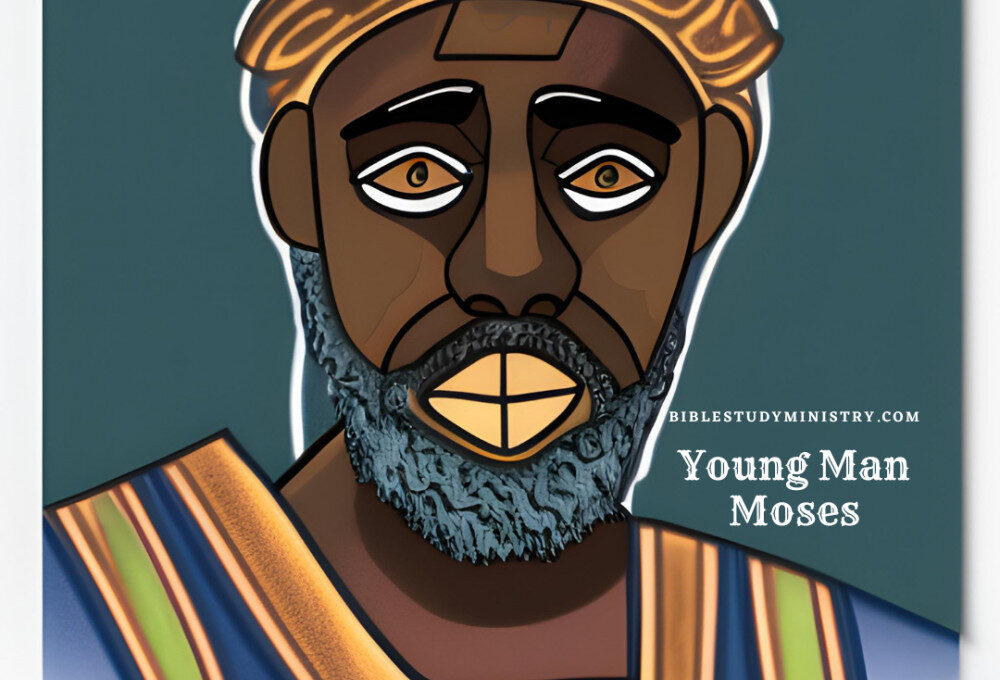In Egypt, there was a man from the esteemed house of Lewi who married as his wife a daughter from the same lineage or tribe. Their union bore fruit, and a son was born to them. Overwhelmed by the child’s beauty and potential, the mother concealed him for three months.
Remember, they were under the decree to murder male children by dumping them in the Egyptian river. However, when she could no longer hide him, she crafted a sturdy ark using bulrushes, sealing it with slime and pitch and placed the child within it. Tenderly, she laid the ark among the reeds by the river’s edge.
Mama commissioned the boy’s sister to watch from afar, and she did, eager to see what fate had in store for him. As fortune would have it, the daughter of Pharaoh, accompanied by her attendants, came to the river for her daily ritual of cleansing. Her eyes fell upon the ark nestled among the reeds, and she sent her handmaiden to fetch it.
Pharaoh’s Daughter Finds Moses
When she opened the ark, she discovered the weeping child and was moved with compassion. She was not in full agreeance with the decree made and further had compassion upon seeing this Bantu baby with her own eyes. She recognized him as one of the Bantu children, so she turned to his sister, Miriam, who asked the pharaoh’s daughter if she should seek a Bantu woman to nurse the child on her behalf.
Without hesitation, Miriam went to fetch the child’s own mother as the nurse. Pharaoh’s daughter agreed but did not know the girl was the baby’s sister and did not know the nurse was the child’s mother. Nevertheless, the mother was instructed to care for the child and promised due compensation. The child’s mother gladly took her son into her arms, nourishing him with love and care.
As the boy grew, she eventually brought him back to Pharaoh’s daughter, who embraced him as her own. Pharaoh’s daughter named him Moses, meaning “drawn out of the water,” as a testament to his miraculous rescue. However, the ruling pharaoh and his family were the Mose family.
The Mose Family
Kamose, Ahmose, and Thutmose 1 ruled during the 18th Dynasty of the Japhethic family of Egypt. Therefore, it is seeming that Moses’ name would correspond with the family on the throne, to whom the Great Creator sailed him.
Moses Fled Egypt to Midian
In time, as Moses matured, he ventured out among his Bantu brethren and witnessed the burdens they endured under Egyptian oppression. His heart ached with empathy, and he couldn’t bear to see his brethren mistreated.
One day, he encountered an Egyptian who struck a Bantu, and in a moment of righteous indignation, he intervened, defending his fellow kinsman. The Egyptian then attacked Moses who defended himself to the death of the Egyptian. Ensuring no witnesses were present, Moses buried him in the sand. However, there were enough witnesses.
The following day, Moses encountered two Bantu men engaged in a heated dispute. He questioned the aggressor, asking why he would harm his fellow brother. The man retorted with disdain, questioning Moses’ authority and reminding him of the Egyptian he had slain.
Moses Fled Egypt
“Will you kill me too,” he lashed out in anger towards Moses. Realizing that news of his actions had spread, Moses became fearful, for he knew that Pharaoh would seek retribution. In order to protect his life, Moses fled from Pharaoh’s wrath and found refuge in the land of Midian, where he rested by a well.
The Midianites were from the union between Abram and Keturah. Remember:
Genesis 25:6 But unto the sons of the concubines, which Abram had, Abram gave gifts, and sent them away from Isaac his son, while he yet lived, eastward, unto the east country.
Keturah’s children were sent eastward away from Isaaka. Isaaka lived in modern-day Namibia, which is South West in the land of Shem (Africa). Thus Midian would be east, we project modern-day Kenya.
In the land of Midian at a well, Moses encountered the seven daughters of Reuel (Jethro), who was the priest of Midian. They had come to draw water for their father’s flock, but shepherds sought to drive them away.
Moses Meets And Marries Zippora
Displaying his strength and kindness, Moses stood up against the shepherds, defending the women and tending to their flock. Impressed by his noble character, the daughters returned to their father and recounted how an Egyptian had saved them and provided water for their flock. Notice, they themselves did not distinguish Moses, a son of Akobe, a Bantu, mistaking him for an Egyptian.
Curious about this mysterious savior, Reuel invited Moses to join them, offering him hospitality and sustenance. Moses accepted the invitation, and in due course, he married Reuel’s daughter, Zipporah (Zipora). She bore him a son, whom Moses named Gershom, signifying his experience as a stranger in a foreign land.
Back in Egypt the Bantu Cry to Their Maker
Meanwhile, back in Egypt, the reigning king passed away, and the cries of the oppressed children of the Bantu reached the ears of the Great Creator. Moved by their anguish and recalling the covenant made with their forefathers, Abramshem (Abram), Isaaka, and Akobe, the Great Creator looked upon the children of Akobe with favor and compassion.
And so, the stage was set for the unfolding of a remarkable journey, as Moses, with his divine purpose and the support of the Great Creator, would become the instrument of liberation for the House of the Bantu, leading them out of the land of bondage towards a brighter future.

To be continued…
Written by Minister Koko
For BibleStudyMinistry.com readers
Tell a friend about us, about the movement for truth and righteousness, all for a better world community!
Do so with all love and Spiritual regards
